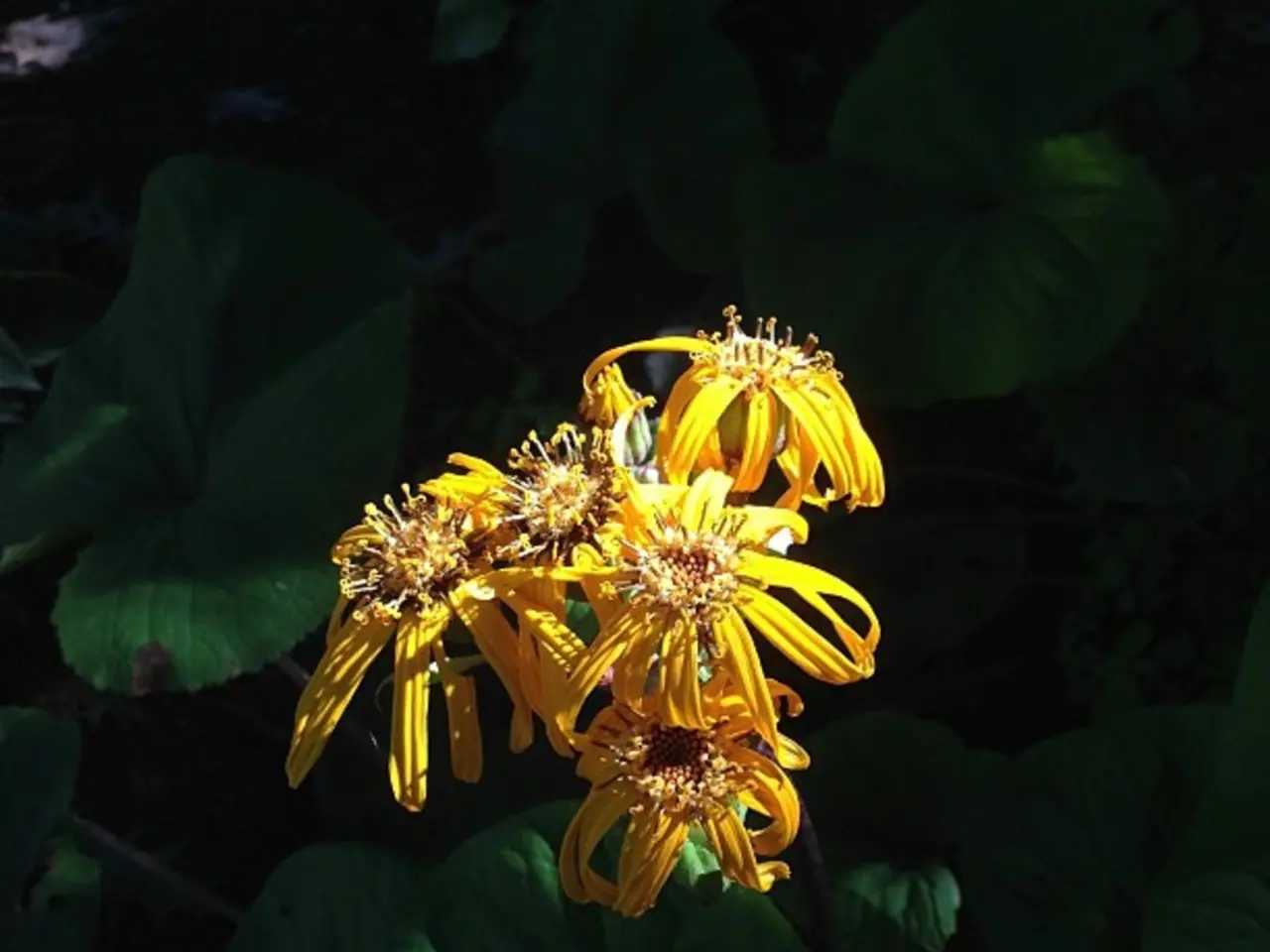Yellowing Orchid Leaves: Common Causes and Solutions Explored
Orchids, with their beautiful blooms, are a popular choice for many home gardeners. However, one common issue that can arise is yellowing leaves. This article aims to shed light on the causes of yellowing leaves in orchids and provide solutions to help restore their health.
Cinnamon, surprisingly, has been found to be an effective natural fungicide for orchids. However, yellowing leaves in orchids are more commonly caused by other factors. Overwatering or underwatering, excessive or insufficient light, nutrient imbalances, stress from repotting, and low humidity are all common culprits.
When roots are waterlogged, they can rot, causing leaves to yellow. Conversely, underwatering leads to dehydration stress. Too much direct sunlight can cause sunburn, producing yellow or brown crispy patches on leaves, while too little light hinders photosynthesis, leading to chlorosis (yellowing). Nutrient imbalances, especially excess fertilizer leading to salt buildup in the potting medium, can burn leaf tips and cause yellowing. Stress from repotting can also cause temporary yellowing during recovery. Lastly, low humidity can stress leaves and may cause them to turn yellow and crispy at tips.
To address yellow orchid leaves, several solutions can be implemented. Adjusting watering to ensure orchid roots dry out slightly between waterings and using well-draining media can prevent root rot or dehydration. Modifying light exposure by placing orchids in bright, indirect light can avoid sunburn, especially for Phalaenopsis types. Flushing the medium and adjusting fertilization to leach excess salts from the potting medium and apply a diluted orchid-specific fertilizer monthly can prevent salt burn. Maintaining humidity at 50–70% can relieve leaf stress and encourage recovery. Allowing recovery time after repotting can also help yellowing leaves improve within 2–4 weeks with proper care.
Orchid pests such as aphids, mealybugs, scale, spider mites, thrips, and whiteflies can also cause yellowing orchid leaves. These pests can be cleaned off with damp paper towels treated with neem oil and washing-up liquid. For diseases, isolate the plant from other plants, remove affected tissue with a sterile knife or hand pruners, and apply fungicide.
Cool-growing orchids, including Cymbidium and Dendrobium, thrive in daytime temperatures of 60 to 70°F (15 to 21°C) and nighttime temperatures of at least 50°F (10°C). Pseudobulb orchid species store some water within the plant, allowing for slightly drier periods between watering.
Excessive yellowing of new growth is a sign of plant stress and usually signifies an issue with orchid care. Orchid light requirements vary between different types of orchids, but most species do not like to be positioned in direct sunlight. Diseases such as black rot, powdery mildew, bacterial brown spot, and bacterial soft rot can cause leaves to turn yellow, with accompanying symptoms.
Phalaenopsis orchids should not be allowed to dry out completely. When in doubt, check for signs of moisture before watering again, such as feeling for moisture with your finger or checking for condensation on the pot. Orchid fertilizing is important during the active growth stage, using a balanced water-soluble orchid fertilizer.
In summary, yellowing orchid leaves often indicate care issues related to watering, light, nutrient salt buildup, or repotting stress. Correcting these environmental factors and providing appropriate post-repot care usually restores leaf health.
Ensuring proper watering and using well-draining media can help prevent root rot and dehydration, two common causes of yellowing leaves in orchids. Additionally, maintaining humidity at 50–70% and providing the correct light exposure can prevent leaf stress, chlorosis, sunburn, and other issues that can cause yellowing.



